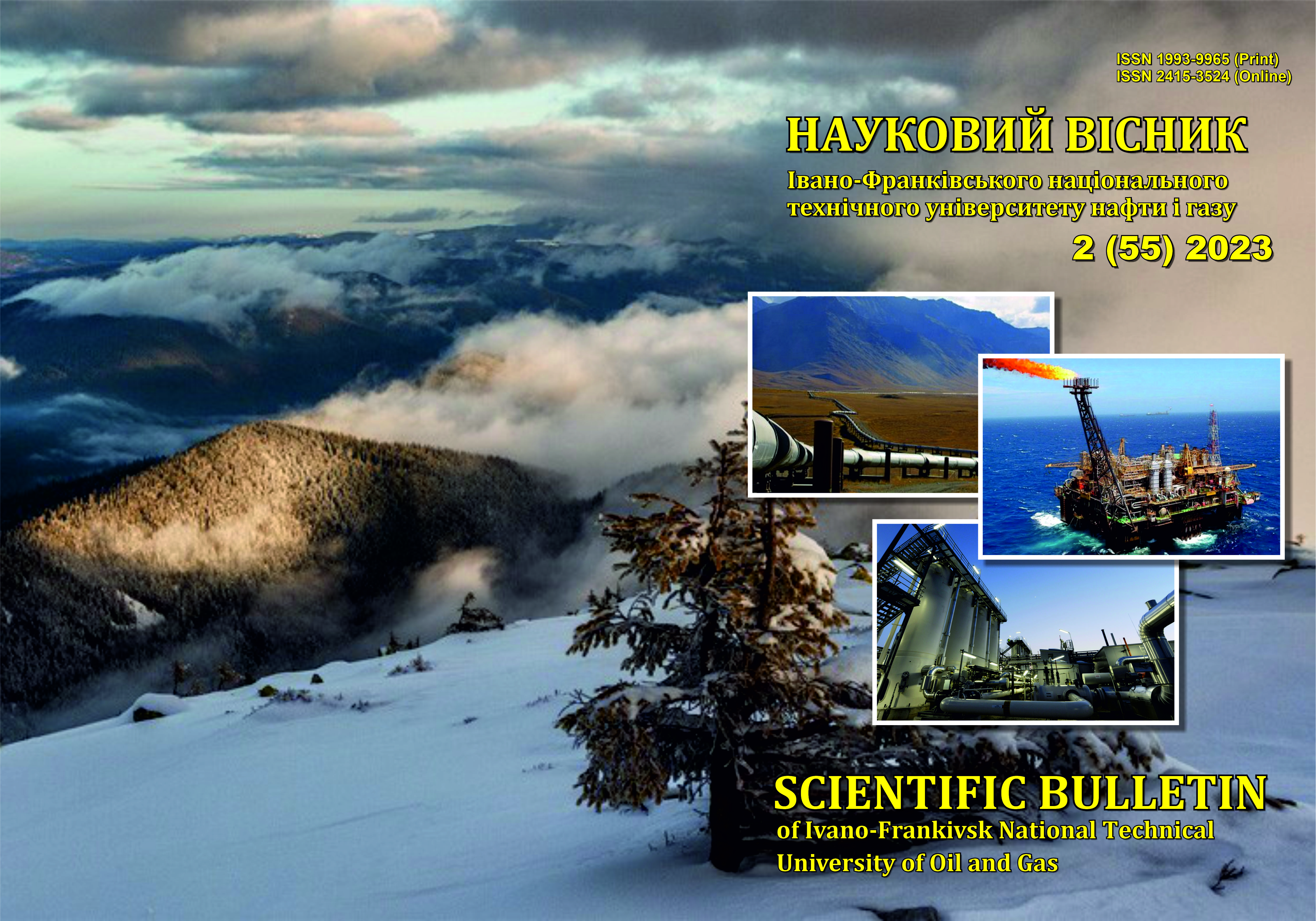Designing an intelligent system for global search of hydrocarbon reservoir rock fracture zones using discrete technologies
DOI:
https://doi.org/10.31471/1993-9965-2023-2(55)-70-76Keywords:
category theory, ant colony method, global search, fracture zones, reservoir rocks, hydrocarbons, forecasting.Abstract
The study is devoted to developing new approaches for predicting the zones of the destruction of hydrocarbon reservoir rocks using the formal logical apparatus of category theory and the ant colony algorithm. Upon further examination of the problem, it was revealed that the efficiency of predicting the distribution of hydrocarbon deposits significantly increases in the case of using knowledge about the dynamics of processes that create favorable conditions for the formation of hydrocarbon accumulations. The key information flows that describe the object of research are identified, and two types of parameters are distinguished: parameters that directly characterize the presence or absence of destructions and parameters that indirectly characterize the presence or absence of destructions. The main stage in analyzing existing methods and ways of predicting destruction is processing large data arrays characterized by weak structuring and low reliability. As a result, it is suggested that the formal-logical apparatus of category theory be combined with discrete structural components and a multi-agent method. The least- squares method was used to form the objective functions, which will mathematically formulate already structured data with sufficient accuracy. An organizational structure for anticipating the destruction zones of hydrocarbon reserve rocks is proposed. The major parameters that influence it are discovered during the formalization of the strategy for the prediction process. The existence or absence of reservoir rocks is anticipated using the principal agent classifications. To achieve this purpose, the ant colony approach was used to create a worldwide search using discrete technologies
Downloads
References
Rudowsky I. Intelligent Agentsю Americas Conference on Information systems. New York, August 2004.
Mark Sims, Daniel Corkill, Victor Lesser. Separating Domain and Coordination in Multi- Agent Organizational Design and Instantiation. International Conference on Intelligent Agent Technology (IAT 2004). September 2004. P. 155- 161.
Tambe M., Adibi J., Alonaizon Y., Erdem A., Kaminka G., Marsella S., Muslea I. Building agent teams using an explicit teamwork model and learning. Artificial Intelligence. 1999. No 110. P. 215–240.
Decker K., Lesser V. Generalizing the partial global planning algorithm. International Journal an Intelligent Cooperative Information Systems. June 1992. Vol. 1(2). P. 319–346.
Lesser V., Decker K., Wagner T., Carver N., Garvey A., Horling B., Neiman D., Podorozh- ny R., Nagendra Prasad M., Raja A., Vincent R., Xuan P., Zhang X. Evolution of the GPGP/TAEMS Domain-Independent Coordination Framework. Autonomous Agents and Multi-Agent Systems. July 2004. Vol. 9(1). P. 87–143.
Mayevskiy B.Y., Zderka T.V., Kurovets S.S., Yarema A.V. Lithogenetic fracturing of Oligocene reservoir-rocks of the pre-Carpathian depression. Journal of Hydrocarbons Mines and Environmental Research. 2010. No 16. P. 53–59.
Krivoulya G., Tokariev V., Ilina I, Shcher- bak V. Mathematical Model for Finding Probabil- ity of Detecting Victims of Man-Made Disasters Using Distributed Computer System with Recon- figurable Structure and Programmable Logic. IEEE International Scientific-Practical Conference Problems of Infocommunications, Science and Technology: (PIC S&T). 06-09 oct. 2020. Kharkiv, 2020. P. 197–201.
Shtovba S. D., Rudyi O. M. Ant Algorithms Optimization. Visnyk VPI. 2004. No 4.
P. 62–69. [in Ukrainian]
Pintea C.-M. Advances in Bio-inspired Computing for Combinatorial Optimization Prob- lems. Heidelberg: Springer, 2014.
Karaboga D., Gorkemli B., Ozturk C., Karaboga N. A comprehensive survey: artificial bee colony (ABC) algorithm and applications. Artificial Intelligence Review. 2014. Vol. 42(1). P. 21–57.
Subbotin S. О., Oliinyk А. О., Oliinyk О. О. Neiteratyvni, evoliutsiini ta multyagentni metody syntezu nechitkologichnykh i neiromerezhnykh modelei: monographiia / pid zag. red. S. О. Subbotina. Zaporizhzhia: ZNTU, 2009. [in Ukrainian]
Downloads
Published
How to Cite
Issue
Section
License
Авторські права....


1.png)

















